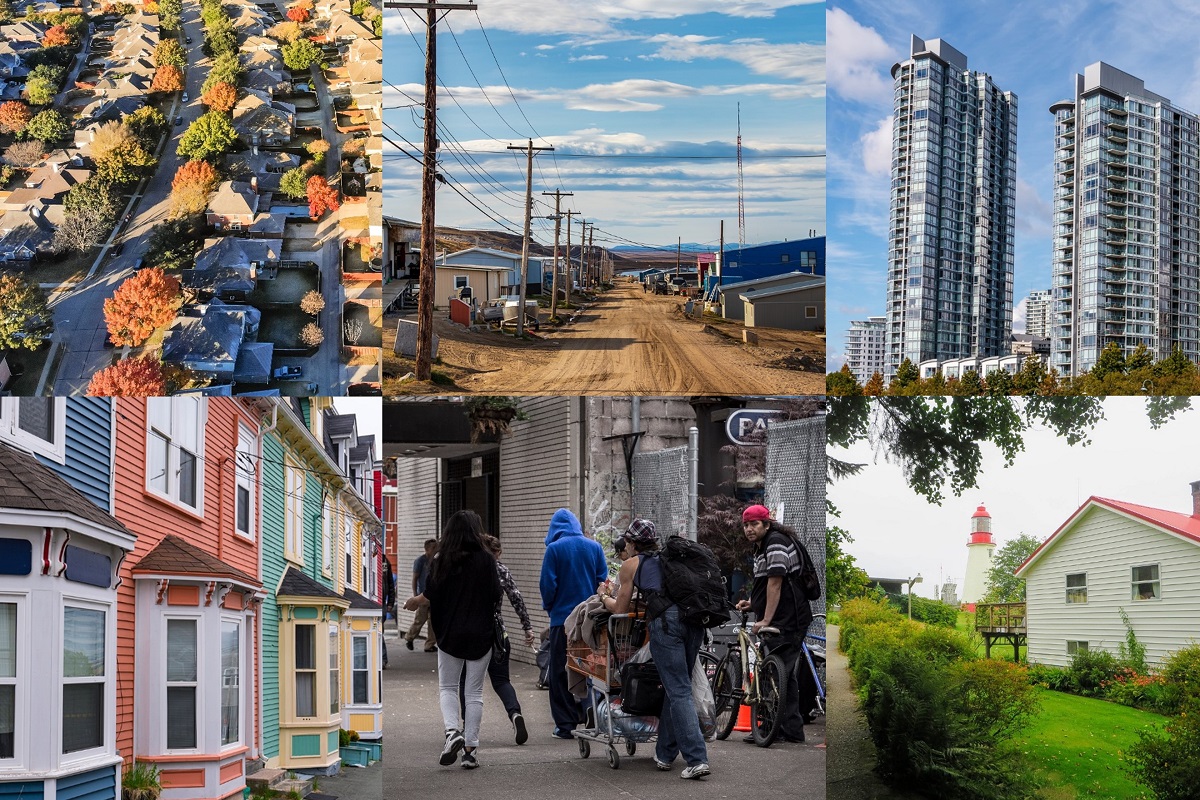Nadine Badets
June 12, 2020
Download the article (PDF)
The COVID‑19 lockdown and ensuing economic repercussions have created a significant amount of financial stress for families in Canada. Between February and April 2020, about 1.3 million people in Canada were unemployed, with approximately 97% of the newly unemployed on temporary layoff, meaning they expect to go back to their jobs once the pandemic restrictions are relaxed.1
Research has shown that financial insecurity can severely limit access to food for low income families and exacerbate socio-economic inequities.2 Other factors, such as health and disability status, level of social support and the limited availability of certain food products, also contribute to food insecurity during the COVID‑19 pandemic.
Financial inequities intensified during physical distancing and economic lockdown
Overall, 5.5 million adults in Canada have either been affected by job loss or reduced work hours during the COVID-19 lockdown, meaning these people and their households have a significant reduction in income for necessities such as food and shelter.3 In 2018, about 3.2 million people lived below Canada’s official poverty line,4 and the economic impacts of the pandemic have likely increased these numbers.
The pandemic is also amplifying existing financial inequities.5 In Canada in 2015, the national prevalence of low income was 14%, however it was much higher among some groups, such as immigrants (Arab, West Asian, Korean, Chinese), Indigenous Peoples (First Nations people, Inuit, Métis), and Black people.6, 7 These groups were more likely to be living with low income before the COVID‑19 lockdown, and have been more likely than others to report that the pandemic has had a negative effect on their finances. According to recent survey data from the Vanier Institute of the Family, the Association of Canadian Studies and Leger,8 over half of visible minorities (51%) had a decrease in their income during the lockdown, and Indigenous peoples (42%) were most likely to report having difficulty meeting financial obligations, such as being able to pay bills on time.9, 10
Food banks across Canada have seen surges in use since the beginning of the COVID‑19 pandemic
Prior to the COVID‑19 pandemic, Food Banks Canada estimated that food bank use across the country had stabilized, with 2019 having almost the same number of visits as 2018, remaining at levels similar to 2010. In the month of March 2019, there were close to 1.1 million visits to food banks across Canada, with more than 374,000 visits for feeding children.11
Statistics Canada estimates that in 2017–2018 about 9% of households (1.2 million) in Canada were food insecure, meaning they struggled financially to get food and did not have enough for all household members to eat regular and nutritious meals.12, 13 As with financial insecurity, food insecurity disproportionately affects certain population groups in Canada. For example, in 2014 food insecurity among Black people (29%) and Indigenous people (26%) was more than double the national average (12%).14
Research has consistently found that people living in remote and Northern communities are more likely to experience food insecurity, such as Inuit communities in Inuit Nunangat, the Inuit homeland.15 It has also been found that Indigenous populations living in urban areas experience high levels of food insecurity. In 2017, 38% of Indigenous peoples 18 years and older living in urban areas were food insecure.16
Since the COVID‑19 pandemic started, Food Banks Canada reported that there has been an average increase of 20% in demand for services from food banks across the country, alarmingly close to the 28% increase seen during the Great Recession. Projections by Food Banks Canada estimate that demand could continue to rise to between 30% and 40% higher than pre-pandemic levels. Some food banks – such as The Daily Bread in Toronto, one of the largest food banks in Canada – have seen increases of over 50% in use.17
Increases in grocery sales associated with the receipt of financial support through CERB
Early in the pandemic (late March to early April 2020), 63% of people reported that they stocked up on essential groceries and pharmacy products as a precaution.18
Grocery sales across Canada saw a sharp increase in March 2020, rising 40% toward the end of the month and continued to remain high in mid‑April.19 The delivery of federal financial supports for unemployed people, such as the Canadian Emergency Response Benefit (CERB),20 appear to be directly linked with an increase in grocery sales, which is likely helping to mitigate food insecurity for some Canadians.21
However, CERB currently only allows recipients to claim the benefit four times for a total of 16 weeks. As July 2020 approaches, many Canadians will be using up their final installment of CERB, and not all will be eligible to be transferred to EI, which could have a serious impact on food insecurity in Canada.
Single parents and seniors with low levels of social support struggle the most to get groceries
Physical (social) distancing measures have also created new barriers for individuals and families trying to navigate new rules of when, how and with whom they can or should buy groceries. For some, such as seniors, single parents, people with disabilities and those who have (or are caring for someone with) compromised immune systems, having limited finances and little social support can seriously restrict access to food.
In 2017–2018, single parents with children under 18 years reported the highest levels of food insecurity in Canada. Female single parents had the highest rate of food insecurity at 25%, followed by male single parents at 16%.22 This compares with 12% among men and women living alone, 7% of couples with children under 18, and 3% of couples without children.23
Physical distancing measures can be particularly complex for single parents without access to child care, who may have to decide between bringing children to grocery stores, thereby breaking physical distancing rules and potentially exposing children to the virus, or turning to organizations like food banks for support.24
Seniors living with low income are less likely to have a high level of social support (77%) compared with seniors living in high income (89%). In periods of isolation such as the current lockdown, access to essentials like food can be challenging, especially for low income seniors who are ill, concerned for their health or unable to get groceries on their own due to physical or financial restrictions.25
Hoarding of certain foods limits supply and access for low income families and food banks
The COVID‑19 pandemic brought a series of panic-buying trends around the world, most notably of hand sanitizer and toilet paper.26 Many grocery stores and pharmacies have had their stock of certain food items depleted several times during the pandemic.
In mid-March 2020, sales of dry and canned foods in Canada surpassed those of fresh and frozen foods. Rice sales rose 239% compared with the same period in 2019, sales of pasta rose by 205%, canned vegetables by 180% and sales of infant formula by 103%.27 Shelf-stable foods such as these are usually a major part of food bank products,28 but are more difficult to come by during the pandemic and thus limit supplies for food insecure families.29
More research is needed to better understand the effects of the pandemic on hunger, nutrition and food insecurity in households across Canada in order to support and develop programs aimed at reducing inequities in access to food.
To find a food bank nearby or make a donation, visit the Food Banks Canada website.
Nadine Badets, Vanier Institute on secondment from Statistics Canada
Notes
- Statistics Canada, “COVID‑19 and the Labour Market in April 2020,” Infographics (May 8, 2020). Link: https://bit.ly/3duO2si.
- Visit the PROOF Food Insecurity Policy Research website for more on food insecurity and social inequities. Link: https://bit.ly/2MQH8T8.
- Statistics Canada, “COVID‑19 and the Labour Market in April 2020.”
- Statistics Canada, “Health and Social Challenges Associated with the COVID‑19 Situation in Canada,” The Daily (April 6, 2020). Link: https://bit.ly/3fErrvo.
- Learn about the impact of the COVID-19 pandemic on inequalities in Canada, see Canadian Human Rights Commission, Statement – Inequality Amplified by COVID-19 Crisis (March 31, 2020).
- Statistics Canada, “Visible Minority (15), Income Statistics (17), Generation Status (4), Age (10) and Sex (3) for the Population Aged 15 Years and Over in Private Households of Canada, Provinces and Territories, Census Metropolitan Areas and Census Agglomerations, 2016 Census – 25% Sample Data,” Data Tables, 2016 Census (updated June 17, 2019). Link: https://bit.ly/30OqUC2.
- Statistics Canada, “Aboriginal Identity (9), Income Statistics (17), Registered or Treaty Indian Status (3), Age (9) and Sex (3) for the Population Aged 15 Years and Over in Private Households of Canada, Provinces and Territories, Census Metropolitan Areas and Census Agglomerations, 2016 Census – 25% Sample Data,” Data Tables, 2016 Census (updated June 17, 2019). Link: https://bit.ly/2zPHMxb.
- The survey, conducted by the Vanier Institute of the Family, the Association for Canadian Studies and Leger, on March 10–13, March 27–29, April 3–5, April 10–12, April 17–19, April 24–26, May 1–3 and May 8–10, 2020, included approximately 1,500 individuals aged 18 and older, interviewed using computer-assisted web-interviewing technology in a web-based survey. All samples, with the exception of those from March 10–13 and April 24–26, also included booster samples of approximately 500 immigrants. In addition, from about May 1 to 10, there was an oversample of 450 Indigenous peoples. Using data from the 2016 Census, results were weighted according to gender, age, mother tongue, region, education level and presence of children in the household in order to ensure a representative sample of the population. No margin of error can be associated with a non-probability sample (web panel in this case). However, for comparative purposes, a probability sample of 1,512 respondents would have a margin of error of ±2.52%, 19 times out of 20.
- It is important to emphasize that there is a great deal of diversity within visible minority groups and Indigenous populations, all groups have unique and distinct experiences of financial and food insecurity, as well as histories, geographies, cultures, traditions, and languages.
- For more on the impact of the COVID-10 pandemic on immigrant families and First Nations people, Métis and Inuit, see Laetitia Martin, Families New to Canada and Financial Well-being During Pandemic (May 21, 2020) and Statistics Canada, “First Nations people, Métis and Inuit and COVID-19: Health and social characteristics,” The Daily (April 17, 2020). Link: https://bit.ly/2Y714r3.
- Food Banks Canada, “Hunger Count 2019.” Link: https://bit.ly/2AZ1GpP.
- Ibid.
- Statistics Canada, “Household Food Security by Living Arrangement,” Table 13-10-0385-01 (accessed May 27, 2020). Link: https://bit.ly/37iQDnq.
- Health Canada, Household Food Insecurity in Canada: Overview (page last updated February 18, 2020). Link: https://bit.ly/30JLCDh.
- Valerie Tarasuk, Andy Mitchell and Naomi Dachner, “Household Food Insecurity in Canada, 2014,” PROOF Food Insecurity Policy Research (updated May 12, 2017). Link: https://bit.ly/3eJ0mpl (PDF).
- Paula Arriagada, “Food Insecurity Among Inuit Living in Inuit Nunangat,” Insights on Canadian Society, Statistics Canada catalogue no. 75-006-X (February 1, 2017). Link: https://bit.ly/2maW9oN.
- Paula Arriagada, Tara Hahmann and Vivian O’Donnell, “Indigenous People in Urban Areas: Vulnerabilities to the Socioeconomic Impacts of COVID‑19,” STATCAN COVID‑19: Data to Insights for a Better Canada (May 26, 2020). Link: https://bit.ly/2zuTgWT.
- Beatrice Britneff, “Food Banks’ Demand Surges Amid COVID‑19. Now They Worry About Long-Term Pressures,” Global News (April 15, 2020). Link: https://bit.ly/3boEHRe.
- Statistics Canada, “How Are Canadians Coping with the COVID‑19 Situation?,” Infographic (April 8, 2020). Link: https://bit.ly/2WKdx21.
- Statistics Canada, “Study: Canadian Consumers Adapt to COVID‑19: A Look at Canadian Grocery Sales Up to April 11,” The Daily (May 11, 2020). Link: https://bit.ly/3cj58Jz.
- In April 2020, Canada’s federal government established the Canada Emergency Response Benefit (CERB), which provides $2,000 every four weeks to workers who have lost their income as a result of the pandemic. This benefit covers those who have lost their job, are sick, quarantined, or taking care of someone who is sick with COVID‑19. It applies to wage earners, contract workers and self-employed individuals who are unable to work. The benefit also allows individuals to earn up to $1,000 per month while collecting CERB. As a result of school and child care closures across Canada, the CERB is available to working parents who must stay home without pay to care for their children until schools and child care can safely reopen and welcome back children of all ages. Government of Canada, “Canada’s COVID-19 Economic Response Plan.” Link: https://bit.ly/2AhY1DD.
- Statistics Canada, “Study: Canadian Consumers Adapt to COVID‑19: A Look at Canadian Grocery Sales Up to April 11.”
- Statistics Canada, “Household Food Security by Living Arrangement.”
- Ibid.
- Ottawa Food Bank, “COVID‑19 Response Webinar – The First 5 Weeks” (May 13, 2020). Link: https://bit.ly/2AWXF55.
- Kristyn Frank, “COVID‑19 and Social Support for Seniors: Do Seniors Have People They Can Depend on During Difficult Times?,” StatCan COVID‑19: Data to Insights for a Better Canada (April 30, 2020). Link: https://bit.ly/3biLMmp.
- Statistics Canada, “Canadian Consumers Prepare for COVID‑19,” Price Analytical Series (April 8, 2020). Link: https://bit.ly/2WO1r86.
- Ibid.
- Food Banks Canada, “Support Your Local Food Bank.” Link: https://bit.ly/3gqmYwG.












